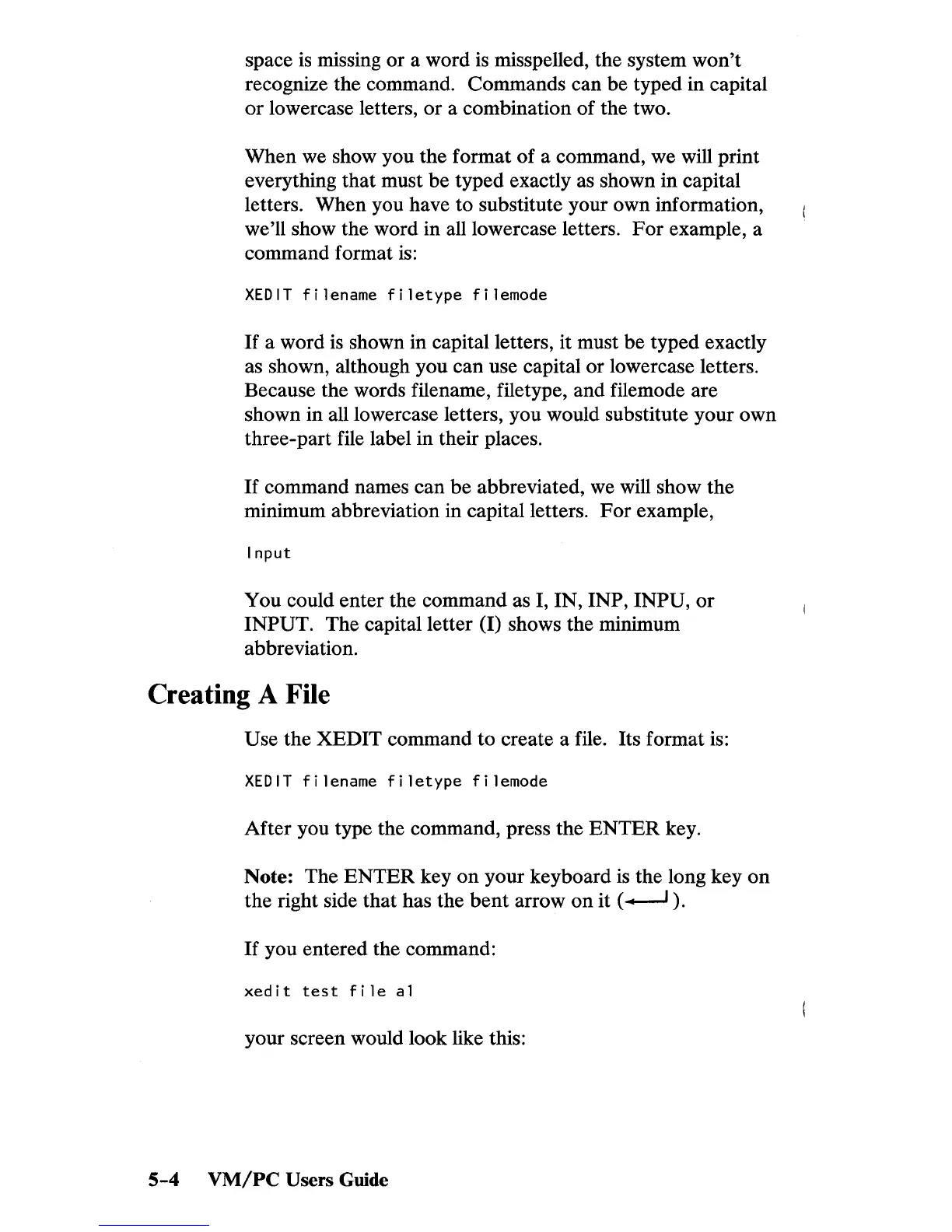space
is
missing or a word
is
misspelled, the system won't
recognize the command. Commands can be typed in capital
or
lowercase letters,
or
a combination of the two.
When we show you the format of a command, we will print
everything that must be typed exactly as shown in capital
letters. When you have to substitute your own information,
we'll show the word in all lowercase letters.
For
example, a
command format
is:
XEDIT
filename
filetype
filemode
If
a word
is
shown in capital letters, it must be typed exactly
as shown, although you can use capital or lowercase letters.
Because the words filename, filetype, and filemode are
shown in all lowercase letters, you would substitute your own
three-part file label in their places.
If
command names can be abbreviated, we will show the
minimum abbreviation in capital letters.
For
example,
Input
You could enter the command as I, IN, INP, INPU,
or
INPUT. The capital letter (I) shows the minimum
abbreviation.
Creating A File
Use the XEDIT command
to
create a file. Its format
is:
XEDIT
filename
filetype
filemode
After you type the command, press the
ENTER
key.
Note: The
ENTER
key
on
your keyboard
is
the long key
on
the right side that has the
bent
arrow
on
it
(--J
).
If
you entered the command:
xedit
test
file
al
your screen would look like this:
5-4
VM/PC
Users Guide

